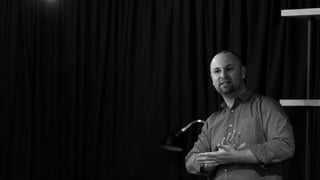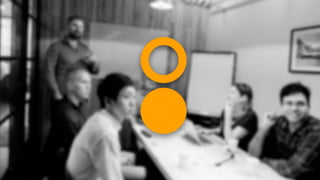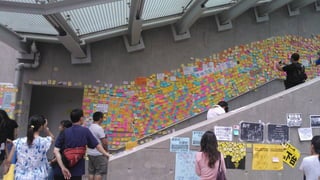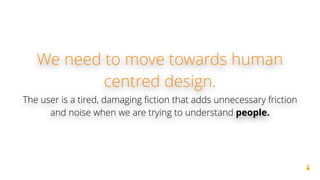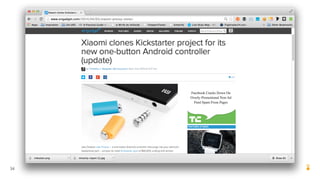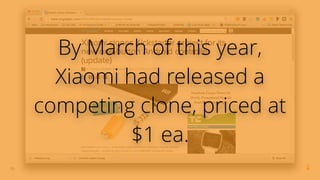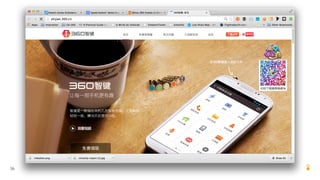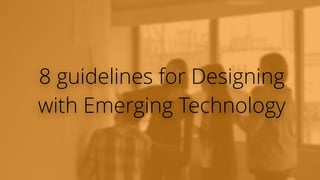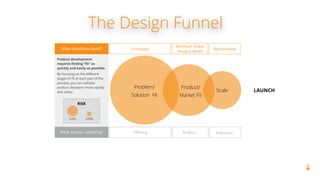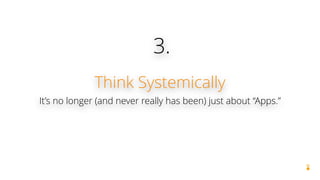Fringe User Experience: Designing for the Future
- 1. Fringe UX Designing the Future
- 2. 2
- 3. 3
- 5. 5
- 6. 6
- 7. 7
- 8. 8
- 9. 9
- 10. 10
- 11. 11 chore Jawbone
- 12. 12
- 13. 13 The “quantified self” movement falls down when all the quantities you’re measuring are zero.
- 14. 14
- 15. 15 Not the experience
- 16. 16 The actual experience.
- 17. 17
- 18. 18 + +
- 19. 19
- 20. 20 core fringe
- 21. “The adjacent possible” Stuart Kaufman
- 22. 22 Genomics Robotics Artificial Intelligence The ‘Internet of Things’
- 23. 23
- 24. 24
- 25. 1. “Users” are a damaging, meaningless fiction
- 26. 26
- 27. 27 “Congratulations, it’s a user.”
- 28. 28
- 29. 29
- 30. We need to move towards human centred design. The user is a tired, damaging fiction that adds unnecessary friction and noise when we are trying to understand people.
- 31. 2. Experience design is an emergent inevitability
- 32. 32
- 33. 33 In October last year Pressy raised nearly $700,000USD, exceeding it’s initial $40,000USD goal
- 34. 34
- 35. 35 By March of this year, Xiaomi had released a competing clone, priced at $1 ea.
- 36. 36
- 37. 37 By August of this year, Qihoo released their own clone, and gave it away for free to attract users.
- 38. Most knowledge in UX doesn’t yet exist. The rate of change necessitates a new understanding of what it means to be an expert. It’s no longer about mastery.
- 39. 3. Screens aren’t the future (get used to it)
- 40. 40
- 41. 41
- 42. Reducing the barrier between behaviour and motivation. As the interface continues to disappear, the connection between desire and action is becoming more natural and intuitive.
- 43. 8 guidelines for Designing with Emerging Technology
- 44. 1. Identify Problems Correctly Spend most of your time at the front of the Design funnel. Emerging technology is too complex and rapid to base your understanding of a problem space on the technology alone.
- 45. The Design Funnel Problem/ Solution Fit Product/ Market Fit Scale What should you build? Prototype Minimum Viable Product (MVP) Beta Release What are you validating? Offering Product Execution LAUNCH Product development requires finding “fit” as quickly and easily as possible. By focusing on the different stages of fit at each part of the process, you can validate product decisions more rapidly and safely. RISK Lots Little
- 46. 2. Learn Constantly When most of your work is in “the future,” knowledge is created as much as it is learnt.
- 47. 3. Think Systemically It’s no longer (and never really has been) just about “Apps.”
- 48. 4. Work at a variety of scales The screen is just a single instance of the relationship we have with technology.
- 49. 5. Connect People & Technology The relationship should be equal and meaningful.
- 50. 6. Provoke & Facilitate Change Design is a responsibility, not a job.
- 51. 7. Work Effectively on Cross-Disciplinary Teams Practice consensual UX - do it “with” people, not “to” them.
- 52. 8. Take Risks When your industry is focused on the future, risk is your business.
- 53. Thank you.


